VERGES

2/10/12






Wales
Wales
Ireland
Gwynedd



Copes Heavy stones bedded onto the verge slates is a common solution seen throughout the British isles. The use of ridge tiles on verges seems to be a Welsh speciality.
Verges are prone to wind damage. Many techniques have been used to prevent this including
-
-using wider slates at the verge
-
-bedding heavy coping stones onto the slates
-
-fixing cramps over the verge
-
-forming abutments with the gable walls
-
-fixing a timber capping over the slates
These all cope with wind forces but some introduce other problems.
Cramps In the north of England cramps are sometimes used, driven into the wall and bent down onto the slate.
Verge slating The simplest verge just carries the slating to the edge of the roof but this needs care. Assuming the slates are properly nailed and are not weak in themselves they should be OK.

Timber cappings are also used to hold verge slates against wind forces. They were adopted alongside the introduction of tally (single size) slates and the use of half slates to close the bond.














Yorkshire Dales

Devon South Hams
Wales
Wales
Burlington slates in Yorkshire
In random slating wider slates are selected for use at the verges.
The original copings (right), replaced by half slates (left) and later by slate and a half slates (centre).
In Devon and Cornwall on small slate roofs, large (rag) slates are laid against two or three courses in the main slating.



Coped abutment In this widespread technique the outer leaf of the gable wall is carried above the slating which is butted up to it. It is seen from Cornwall to Shetland and is a very common feature of church roofs.


Thin slates, cut down to close the bond, are liable to snap across the nails so it is best to only use half slates at least 6 inches (150 mm) wide. Slate and a half slates are a more secure option
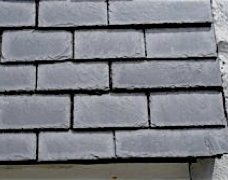
Cornwall
Machynleth Wales
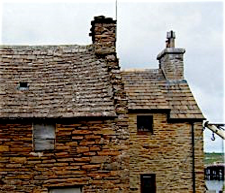
All Wales
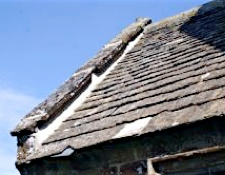
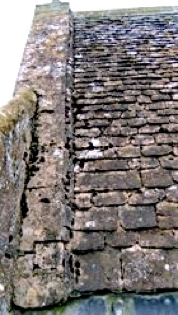
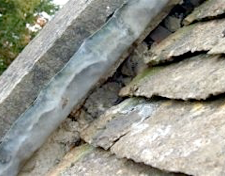
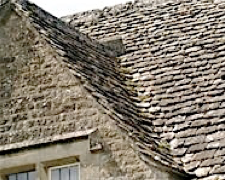
But if half slates are used to close the half bond or, as here, where there was no soffit board the slates can blow off.
Cotswolds
Cotswolds
Technically this is an odd solution because it introduces the problem of sealing the abutment against leaks which is not a problem where coping stones are laid onto the slates.
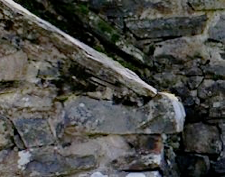
This is OK where there is room to include soakers and/or a cover flashing. But many coped abutments simply rely or mortar flaunches which can crack and leak. Often there isn’t enough upstand for effective soakers and any change which involves raising the roof level such as introducing insulation in the rafter space and a ventilation space under the slates can raise the slating above the coping. This necessitates the introduction of secret gutters or similar techniques.
On many simple buildings there was originally no attempt to seal the joint so water must have run down inside the gable wall. So the question arises Why would they be built like this?
The copings stones are supported on a spike or kneelers.
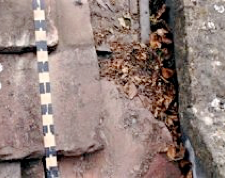
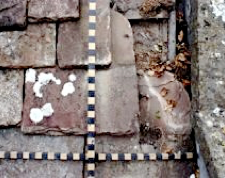
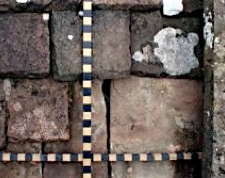
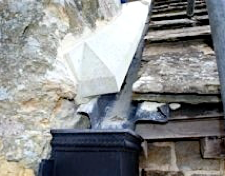
Secret gutters need regular cleaning to prevent them becoming blocked.
Sussex
Clearly this gable construction was deliberate as shown here where the stones for the two leaves have been selected to fit the roof slope. Could it be that they were not built for slate roof, but for an earlier thatch roof.
There are plenty of examples of thatched roofs with raised verge walls. Did these prevent the thatch being blown off the gable? Thatch off course doesn’t need any soakers at abutments so there wouldn’t have been a problem of leaks into the wall. If you have any thoughts on this I’d be pleased to hear them email >.
Denbighshire
Orkney
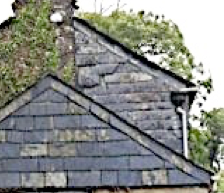
Barge slates are used to protect exposed rafters and purlin ends. They are often cut decoratively.
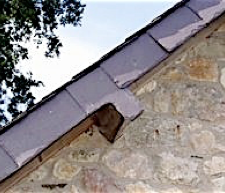
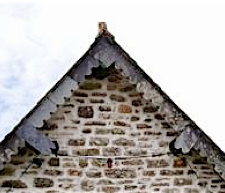
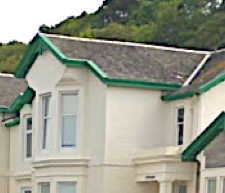

Millport Scotland
Cornwall
Cornwall Wales
Wales
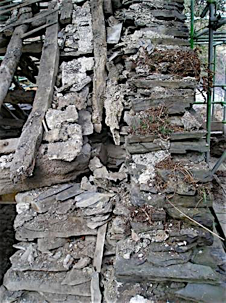
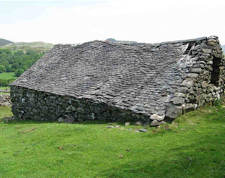
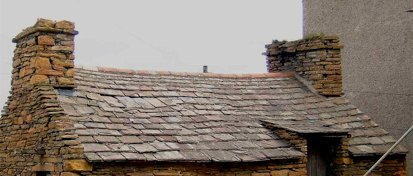
Often the protection is only installed on the most exposed verge.
Wales
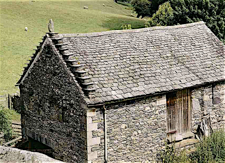
Cumbria
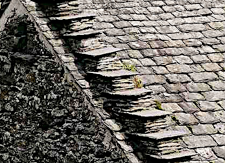
Devon South Hams rag slate verge
Orkney
